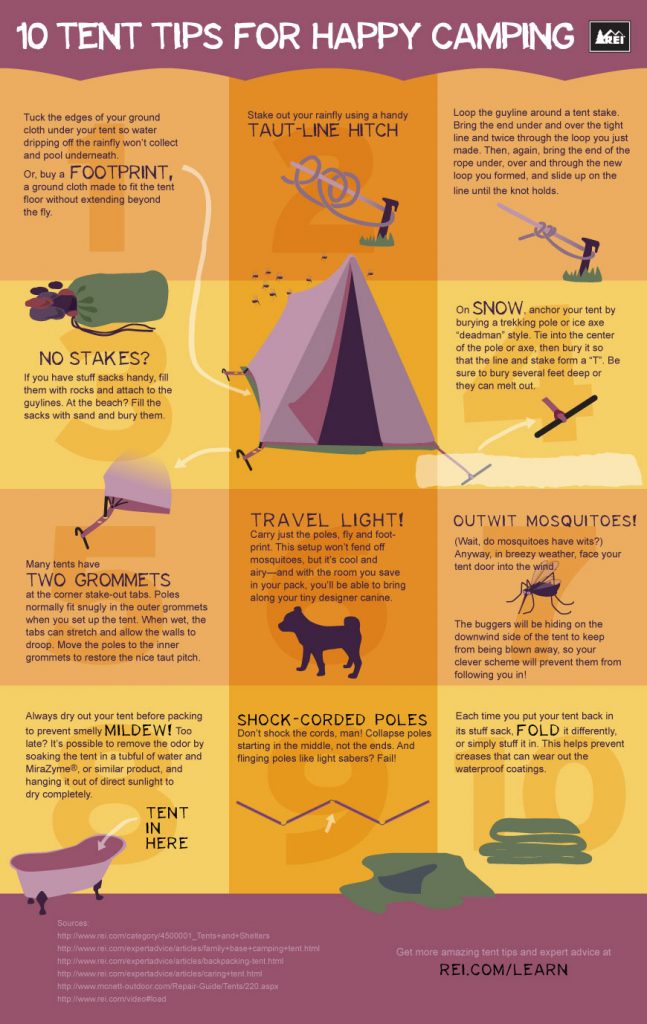Establishing your tent can be a challenging job for also seasoned campers. This guide will cover the basics of pitching an outdoor tents effectively and securely so you can enjoy your outdoor camping journey without tension or fear.
What benefits can you get in camping?
Begin by outlining your camping tent's impact and ground sheet to shield your camping tent flooring from rocks, sticks, dirt, and various other debris. Next off, assemble the camping tent posts and attach them to the corners of the outdoor tents body making use of the proper sleeve or hook.
Picking the Right Site
When you are exhausted after a lengthy day walking, you intend to pitch your outdoor tents and get ready to rest. But you must first stroll around the site to make sure it is secure for camping. Look down and as much as find out whether any trees have large dead branches that might fall on your outdoor tents. These are in some cases called widowmakers and you don't want them to go down on you while you're resting.
Also make certain to avoid low spots that could flood during a tornado and to camp away from pet trails, nests and environments where ticks and chiggers are more than likely to thrive. Try to find a flat, rock-free spot that allows enough for your tent and any other gear you'll be bringing.
Some people like to set their tents up so the head end is pointed towards the eastern to capture the sun's warming rays first thing in the morning. This isn't always required, yet it is a nice touch that can assist wake you up.
Pitching Tips
It might appear obvious, but proper tent pitching is among the most vital consider a good night's sleep. Having a practice run in your home will certainly help you acquaint yourself with your camping tent, locate all the post sleeves and fasteners, and see to it everything is in area. It's additionally a blast to exercise utilizing guylines for security and to uncover any type of broken items.
When you come to your outdoor camping site, examine the terrain to see if it's suitable for your tent. A good general rule is to pitch the outdoor tents on a flat, level place with a small downhill angle. This will permit rain to recede from the camping tent rather than merging before it.
If you can't locate a level area, take into consideration putting a tarp or various other groundsheet under your camping tent footprint to protect it from dampness. This can additionally assist maintain dirt out of the tent.
Making Use Of Guylines Properly
Utilizing man lines effectively is essential to making certain your tent or hammock remains safe in high winds and other bad climate condition. An individual line is a rope or cable that connects to the ground through loops and D-rings in the framework, tarpaulin, or rainfly.
Start by safeguarding one end of the line to a guyout loophole on your camping tent or rain fly, or to the post it's connected to. Then loop the various other end of the line over a stake positioned faraway from the structure and tighten it.
Keeping your shelter's guy lines tight will posh tents prevent sagging or sagging throughout windy problems, avoiding moisture from permeating into the camping tent or damage to the framework and enhancing comfort and safety and security throughout outdoor camping. Constantly check the stress of your man lines during and after negative weather conditions to guarantee they remain safe. In addition, take into consideration loading a person line tensioner to conveniently readjust and preserve the appropriate quantity of stress in your lines.
Removing the Tent
When clearing up into your campsite, discover an area with a level area and clear it of rocks and debris. Also, make certain to set a camping tent impact or tarp slightly smaller sized than your camping tent body to stop water merging. This assists keep your outdoor tents dry from rainfall or condensation and can be particularly useful in gusty locations.
Analyze your gear, including the tent things sacks to make sure absolutely nothing is missing out on. Check that the posts suit their clips and replenish first-aid products if needed.
When it's time to pitch your outdoor tents, begin by orienting the doors downwind, and stake down each edge of the camping tent. If the ground hangs or sandy, think about spreading a tarpaulin under your tent to shield it from wind and decrease the chance of your camping tent tipping over. Likewise, be sure to utilize guylines effectively to restrain your rainfly and keep it taut. A well-pitched camping tent can prevent dripping, condensation, and sun damage.
How long does it take to put up a bell tent?
